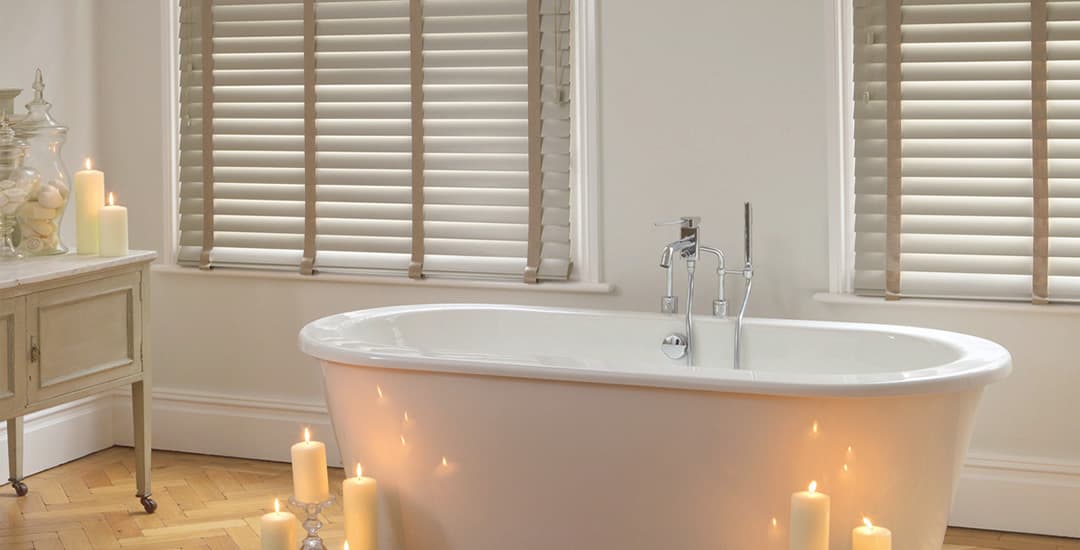
If you had no idea that faux wood blinds could warp at all and came here in a panic because you just ordered some and are now reconsidering your decision; stay calm. Faux wood blind warping is really, really uncommon – and only happens for one specific reason and so, in certain specific scenarios.
Why do faux wood blinds warp then? It is not just “luck of the draw” or “one of those things,” and is in fact due to exposure to extremes of heat. I mean, very extreme extremes for the average UK home – 55 degrees Celsius and above.
In this blog post I will tell you why faux wood blinds might warp, which may be useful info to prevent a future recurrence if yours already have, or on the flipside, to provide reassurance if you’re concerned about it happening in the future.
Why do faux wood blinds warp? You’re probably thinking “exposure to water…”
….And if you were, you would be wrong. So just to get that out of the way at the outset, faux wood blinds are made of PVC and so, are completely waterproof. This makes them a sound choice of blinds for kitchens and bathrooms, or anywhere else where they might get splashed or deal with a lot of environmental humidity.
Real wood blinds, on the flipside, cannot deal with a lot of moisture in the air or direct contact with water, and so it is important to note that while water won’t warp faux wood blinds, it can indeed warp real wood ones.
Is warping a common problem in faux wood blinds?
No. While faux wood blinds can warp due to exposure to high levels of direct heat in certain specific and predictable scenarios that I’ll get to in a minute, it is not a common problem; nor one that is simply an odds game or something that can potentially happen to any blind hung anywhere if you’re just unlucky.
But if you have indeed found yourself faced with warped faux wood blinds, you’ll probably be keen to know why it happened and if this is likely to be an issue you might face in future if you order a new set.
So, why do faux wood blinds warp?
What makes faux wood blinds warp? Exposure to high temperatures. Specifically, those above 55 degrees Celsius, which you’re pretty unlikely to have to contend with in the average home; apart from…
- If your blind is situated over or very close to an oven/Aga/Rayburn etc.
- If your blind is above a large or powerful radiator.
- If your blind is very close to a real wood/solid fuel stove, open fire, or similar.
- Even conservatories that get ridiculously hot in summer can result in the ambient heat building up to a point that it causes a faux wood blind’s PVC slats to become pliable over time, and then begin to bend and lose shape.
- The same applies (although less commonly) to south-facing windows serving rooms that are real sun traps.
- While this isn’t something I have encountered personally, if your blind was located close to a high level of directed heat regularly (like a hair dryer if you happen to dry your hair right by the blind, or perhaps in the path of a fan heater) then this too could theoretically cause warping in a faux wood blind.
Are some faux wood blinds more likely to warp than others?
Interestingly, dark coloured faux wood blinds are a bit more sensitive to high heat than pale/lighter coloured ones, because as we all learned (albeit potentially forgot) in high school science class, darker colours absorb and hold heat to a greater degree than light colours.
This means that white and light-coloured faux wood blinds are more UV-stable and less prone to warping; but they’re not immune to the effect if the temperatures they face are hot enough.
Also don’t forget that even darker coloured faux wood blinds aren’t at all likely to warp other than in very specific situations such as those I outlined above, or comparable ones.
Can you prevent faux wood blinds from warping?
The better the quality of the faux wood blinds you choose, the lower the chances of you running into any problems with them, from warping to wearing out prematurely to falling apart by any other means.
However, if you do need to pick blinds for a window that gets very hot, that gets extreme levels of sun, or that is above or close to a source of high heat, your best bet is ruling out faux wood blinds.
Obviously, any sort of blind placed very close to a source of heat and particularly, near to a flame is unlikely to fare well, and you should also consider with great care not just the potential lifespan of your blind in a hot place, but fire safety too.
For instance, while both faux wood PVC blinds and the materials used for some specific fabric blinds (like Roman blinds and roller blinds) are treated with or made with fire retardancy built in to help to ensure they don’t pose a fire risk themselves and will slow down the spread of a potential household fire, this will always have limits.
However, with this caveat in mind (and please do be clear that I cannot provide either blanket guidance nor personalised advice on household fire safety, nor tell you if any given blind will definitely be safe to hang above or very close to a source of high heat) you may want to consider aluminium Venetian blinds or real wood blinds for hotter parts of the home as a more suitable choice than faux wood Venetians.




